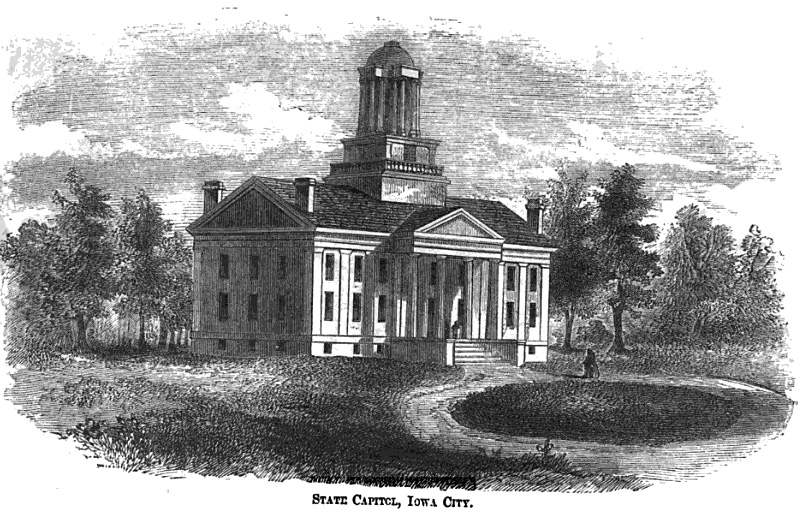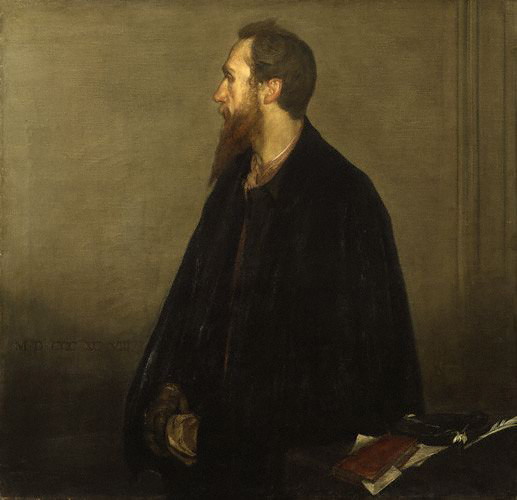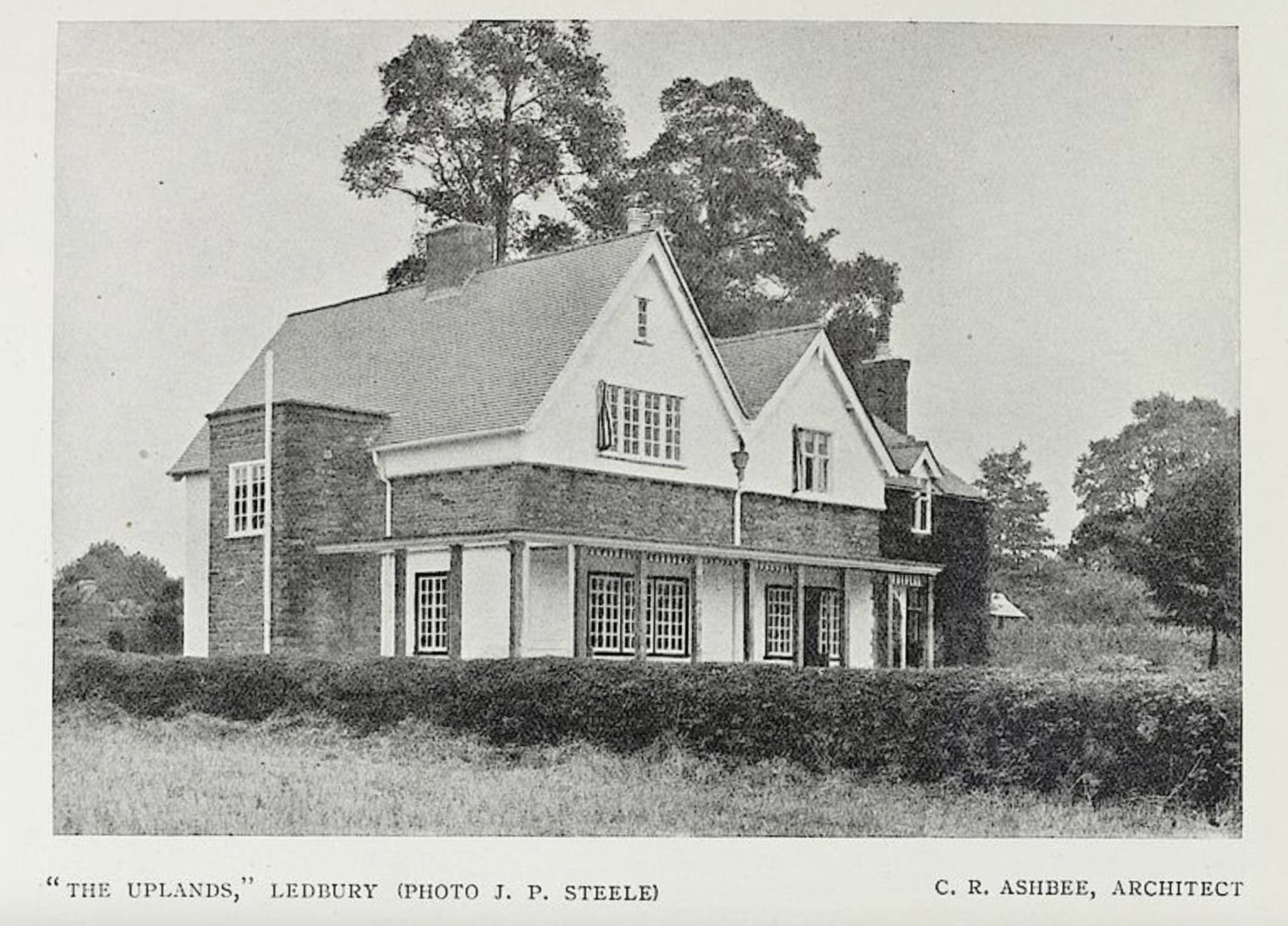|
William Harcourt Hooper
William Harcourt Hooper (1834–1912) was a British wood-engraver. Hooper started his career working for Joseph Swain. In the 1850s, he worked for the weekly newspaper '' Illustrated London News'', as well as artists including Fred Walker, George du Maurier, John Leech, Sir John Tenniel, Lord Leighton, and Sir John Millais. From 1891–96, he worked for the Kelmscott Press, doing much work for William Morris, and afterwards the Ashendene Press The Ashendene Press was a small private press founded by St John Hornby (1867–1946). It operated from 1895 to 1915 in Chelsea, London and was revived after the war in 1920. The press closed in 1935. Its peers included the Kelmscott Press and t ... and Essex House Press, where he created engravings of artists' illustrations, particularly those by Burne-Jones, C.M. Gere and C.R. Ashbee. He taught wood-engraving to Charles Ricketts. Hooper worked on the Kelmscott Chaucer, the Essex House Psalter and Ashendene's Mazetto ... [...More Info...] [...Related Items...] OR: [Wikipedia] [Google] [Baidu] |
Wood-engraver
Wood engraving is a printmaking technique, in which an artist works an image or ''matrix'' of images into a block of wood. Functionally a variety of woodcut, it uses relief printing, where the artist applies ink to the face of the block and prints using relatively low pressure. By contrast, ordinary engraving, like etching, uses a metal plate for the matrix, and is printed by the intaglio method, where the ink fills the ''valleys'', the removed areas. As a result, wood engravings deteriorate less quickly than copper-plate engravings, and have a distinctive white-on-black character. Thomas Bewick developed the wood engraving technique in Great Britain at the end of the 18th century. His work differed from earlier woodcuts in two key ways. First, rather than using woodcarving tools such as knives, Bewick used an engraver's burin (graver). With this, he could create thin delicate lines, often creating large dark areas in the composition. Second, wood engraving traditionally uses ... [...More Info...] [...Related Items...] OR: [Wikipedia] [Google] [Baidu] |
William Morris
William Morris (24 March 1834 – 3 October 1896) was a British textile designer, poet, artist, novelist, architectural conservationist, printer, translator and socialist activist associated with the British Arts and Crafts Movement. He was a major contributor to the revival of traditional British textile arts and methods of production. His literary contributions helped to establish the modern fantasy genre, while he helped win acceptance of socialism in '' fin de siècle'' Great Britain. Morris was born in Walthamstow, Essex, to a wealthy middle-class family. He came under the strong influence of medievalism while studying Classics at Oxford University, there joining the Birmingham Set. After university, he married Jane Burden, and developed close friendships with Pre-Raphaelite artists Edward Burne-Jones and Dante Gabriel Rossetti and with Neo-Gothic architect Philip Webb. Webb and Morris designed Red House in Kent where Morris lived from 1859 to 1865, before m ... [...More Info...] [...Related Items...] OR: [Wikipedia] [Google] [Baidu] |
1834 Births
Events January–March * January – The Wilmington and Raleigh Railroad is chartered in Wilmington, North Carolina. * January 1 – Zollverein (Germany): Customs charges are abolished at borders within its member states. * January 3 – The government of Mexico imprisons Stephen F. Austin in Mexico City. * February 13 – Robert Owen organizes the Grand National Consolidated Trades Union in the United Kingdom. * March 6 – York, Upper Canada, is incorporated as Toronto. * March 11 – The United States Survey of the Coast is transferred to the Department of the Navy. * March 14 – John Herschel discovers the open cluster of stars now known as NGC 3603, observing from the Cape of Good Hope. * March 28 – Andrew Jackson is censured by the United States Congress (expunged in 1837). April–June * April 10 – The LaLaurie mansion in New Orleans burns, and Madame Marie Delphine LaLaurie flees to France. * April 14 – The Whig Party is official ... [...More Info...] [...Related Items...] OR: [Wikipedia] [Google] [Baidu] |
University Of Iowa
The University of Iowa (UI, U of I, UIowa, or simply Iowa) is a public research university in Iowa City, Iowa, United States. Founded in 1847, it is the oldest and largest university in the state. The University of Iowa is organized into 12 colleges offering more than 200 areas of study and seven professional degrees. On an urban 1,880-acre campus on the banks of the Iowa River, the University of Iowa is classified among "R1: Doctoral Universities – Very high research activity". In fiscal year 2021, research expenditures at Iowa totaled $818 million. The university is best known for its programs in health care, law, and the fine arts, with programs ranking among the top 25 nationally in those areas. The university was the original developer of the Master of Fine Arts degree and it operates the Iowa Writers' Workshop, which has produced 17 of the university's 46 Pulitzer Prize winners. Iowa is a member of the Association of American Universities, the Universities Research A ... [...More Info...] [...Related Items...] OR: [Wikipedia] [Google] [Baidu] |
Essex House Psalter
Essex () is a county in the East of England. One of the home counties, it borders Suffolk and Cambridgeshire to the north, the North Sea to the east, Hertfordshire to the west, Kent across the estuary of the River Thames to the south, and Greater London to the south and south-west. There are three cities in Essex: Southend, Colchester and Chelmsford, in order of population. For the purposes of government statistics, Essex is placed in the East of England region. There are four definitions of the extent of Essex, the widest being the ancient county. Next, the largest is the former postal county, followed by the ceremonial county, with the smallest being the administrative county—the area administered by the County Council, which excludes the two unitary authorities of Thurrock and Southend-on-Sea. The ceremonial county occupies the eastern part of what was, during the Early Middle Ages, the Anglo-Saxon Kingdom of Essex. As well as rural areas and urban areas, it ... [...More Info...] [...Related Items...] OR: [Wikipedia] [Google] [Baidu] |
Kelmscott Chaucer
The Kelmscott Press, founded by William Morris and Emery Walker, published fifty-three books in sixty-six volumes between 1891 and 1898. Each book was designed and ornamented by Morris and printed by hand in limited editions of around 300. Many books were illustrated by Edward Burne-Jones. Kelmscott Press books sought to replicate the style of 15th-century printing and were part of the Gothic revival movement. Kelmscott Press started the contemporary fine press movement, which focuses on the craft and design of bookmaking, often using hand presses. While their most famous books are richly decorated, most Kelmscott Press books did not have elaborate decoration, but were published simply. Morris was interested in medieval book design, visiting the Bodleian Library often with Burne-Jones to examine illuminated manuscripts. He designed and published several books before founding Kelmscott Press. Book dealers and designers complained about the poor quality of books published on the ... [...More Info...] [...Related Items...] OR: [Wikipedia] [Google] [Baidu] |
Charles Ricketts
Charles de Sousy Ricketts (2 October 1866 – 7 October 1931) was a British artist, illustrator, author and printer, known for his work as a book designer and typographer and for his costume and scenery designs for plays and operas. Ricketts was born in Geneva to an English father and a French mother and brought up mainly in France. In 1882 he began studying wood engraving in London, where he met a fellow student, Charles Shannon, who became his lifelong companion and artistic collaborator. Ricketts first made his mark in book production, first as an illustrator, and then as the founder and driving force of the Vale Press (1896–1904), one of the leading private presses of the day, for which he designed the type and illustrations. A disastrous fire at the printers led to the closure of the press, and Ricketts turned increasingly to painting and sculpture over the following two decades. In 1906 he also began a career as a theatre designer, first for works by his friend Osca ... [...More Info...] [...Related Items...] OR: [Wikipedia] [Google] [Baidu] |
Essex House Press
Charles Robert Ashbee (17 May 1863 – 23 May 1942) was an English architect and designer who was a prime mover of the Arts and Crafts movement, which took its craft ethic from the works of John Ruskin and its co-operative structure from the socialism of William Morris. Ashbee was defined by one source as "designer, architect, entrepreneur, and social reformer". His disciplines included metalwork, textile design, furniture, jewellery and other objects in the Modern Style (British Art Nouveau style) and Arts and Crafts genres. He became an elected member of the Art Workers' Guild in 1892, and was elected as its Master in 1929. Early life Ashbee was born in 1863 in Isleworth, then just West of the Victorian sprawl of London and now a suburb. He was the first child and only son of businessman Henry Spencer Ashbee, the senior partner in the London branch of the firm of Charles Lavy & Co., and Elizabeth Jenny Lavi (1842–1919), daughter of his German business partner. His parents ha ... [...More Info...] [...Related Items...] OR: [Wikipedia] [Google] [Baidu] |
Ashendene Press
The Ashendene Press was a small private press founded by St John Hornby (1867–1946). It operated from 1895 to 1915 in Chelsea, London and was revived after the war in 1920. The press closed in 1935. Its peers included the Kelmscott Press and the Doves Press. Hornby became friends with William Morris and Emery Walker, who helped inspire his work. These three presses were part of a "revival of fine printing" that focused on treating bookmaking as fine art. The Ashendene Press was famous for producing high-quality works by Dante. Ashendene books had excellent bindings and focused more on pleasure than reform than the other private presses of the time, though one review claims that the Ashendene Press was the most successful private press in recapturing the essence of fifteenth-century printing. Ashendene books were carefully printed with large margins, and despite their lack of extravagant decoration, they were considered spectacular works of art. Two original typefaces were create ... [...More Info...] [...Related Items...] OR: [Wikipedia] [Google] [Baidu] |
Kelmscott Press
The Kelmscott Press, founded by William Morris and Emery Walker, published fifty-three books in sixty-six volumes between 1891 and 1898. Each book was designed and ornamented by Morris and printed by hand in limited editions of around 300. Many books were illustrated by Edward Burne-Jones. Kelmscott Press books sought to replicate the style of 15th-century printing and were part of the Gothic revival movement. Kelmscott Press started the contemporary fine press movement, which focuses on the craft and design of bookmaking, often using hand presses. While their most famous books are richly decorated, most Kelmscott Press books did not have elaborate decoration, but were published simply. Morris was interested in medieval book design, visiting the Bodleian Library often with Burne-Jones to examine illuminated manuscripts. He designed and published several books before founding Kelmscott Press. Book dealers and designers complained about the poor quality of books published on the ... [...More Info...] [...Related Items...] OR: [Wikipedia] [Google] [Baidu] |
Joseph Swain (engraver)
Joseph Swain (29 February 1820 in Oxford – 25 February 1909 in London) was an English wood-engraver. He is best known from his engravings in ''Punch'' magazine of cartoons by Sir John Tenniel. Life Born in Oxford in 1820, he was second son of Ebenezer Swain by his wife Harriet James; Joseph Swain, pastor of East Street Baptist church, Walworth, was his grandfather. He was educated at private schools, first in Oxford, and then in London, where the family moved in 1829. In 1834 Swain was apprenticed by his father, a printer with the firm of Wertheimer & Co., to the wood-engraver Nathaniel Whittock, and was transferred in 1837 to Thomas Williams, brother of Samuel Williams. In 1843 he was appointed manager of the engraving department of ''Punch'', but in the following year set up in business for himself, retaining the whole of the engraving work for ''Punch'' from 1844 until 1900. He taught William Harcourt Hooper. Swain died at Ealing in west London in 1909. Works Swain w ... [...More Info...] [...Related Items...] OR: [Wikipedia] [Google] [Baidu] |
John Millais
Sir John Everett Millais, 1st Baronet, ( , ; 8 June 1829 – 13 August 1896) was an English painter and illustrator who was one of the founders of the Pre-Raphaelite Brotherhood. He was a child prodigy who, aged eleven, became the youngest student to enter the Royal Academy Schools. The Pre-Raphaelite Brotherhood was founded at his family home in London, at 83 Gower Street (now number 7). Millais became the most famous exponent of the style, his painting '' Christ in the House of His Parents'' (1849–50) generating considerable controversy, and he produced a picture that could serve as the embodiment of the historical and naturalist focus of the group, ''Ophelia'', in 1851–52. By the mid-1850s, Millais was moving away from the Pre-Raphaelite style to develop a new form of realism in his art. His later works were enormously successful, making Millais one of the wealthiest artists of his day, but some former admirers including William Morris saw this as a sell-out (Millais n ... [...More Info...] [...Related Items...] OR: [Wikipedia] [Google] [Baidu] |








